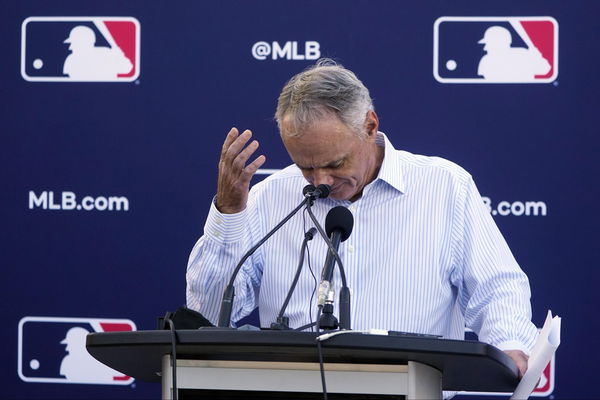

The sound of bats cracking, the fiery atmosphere of the crowd, the roar after a homerun – these are the moments that make Major League Baseball (MLB) special. Yet as the sport gears up for another edition in 2025, fans and analysts are looking beyond the baseball field. Something is taking place off the field, a brewing storm that has the capability of disrupting the game’s tradition.
With the current collective bargaining agreement expiring in 2026, tensions are swirling as a potential lockout situation is on the cards. But this isn’t a dispute over a mere issue – it’s a war over the money that fuels the sport, a battle between team owners and the Players Association. The owners are pushing for a salary cap, hoping to curb the soaring high payrolls that have led to a disparity between the highest and lowest spending teams.
On the other hand, the MLB Players Association has opposed such a cap, fearing it would limit player earnings and disrupt the competitive landscape. This disagreement might lead to a potential lockout and with the scars of the 2021-2022 lockout still fresh, another work stoppage would rob the fans of the game they cherish.
ADVERTISEMENT
Article continues below this ad

The discussion about the widening financial gap has been actively explored by Brodie Brazil, an influential voice within the sports community The problem lies in the financial divide of the MLB. In a market where wealthy teams like the New York Mets or the Los Angeles Dodgers can comfortably compete, small-market teams struggle to stay afloat. This imbalance has developed a sense of frustration among the fans, with many voicing their frustration with the current system.
“The owners probably need to be willing to show massive resolve and lose an entire season if they want a cap, just like the NHL did in 2005,” one fan remarked, drawing a parallel to the NHL’s lockout that resulted in a salary cap. “They can wait it out longer than the players can, especially the fringe guys and those who don’t earn mega bucks,” the fan continued, alluding to the power imbalance in these negotiations. “Small market teams cannot be financially sustainable if they spend at the rate the big kids do,” another fan commented, echoing a similar belief that the current financial structure is full of flaws.
Ultimately, the growing financial divide is a pressing issue that could possibly bring a change in the dynamics of the MLB landscape. As fans and owners alike push for reforms like a salary cap and floor, the league faces a critical decision about how to ensure fairness and sustainability in its future.
What’s your perspective on:
Will MLB's financial divide destroy the game we love, or is a salary cap the solution?
Have an interesting take?
ADVERTISEMENT
Article continues below this ad
The hidden cost of MLB’s financial disparity: the impact on player development
While the conversation around MLB’s financial disparity heats up, there is an equally important yet overlooked repercussion. The impact on player development that goes hand in hand with the long haul of the sport.
Smaller teams that can’t compete financially at the top level are forced to focus on their in-house development programs. While this is not inherently negative, the reality is that many of these teams don’t have the financial flexibility to supplement their talent with high-profile free agents and other resources. With MLB’s highest-paid teams throwing money at big names to instantly improve their rosters, smaller teams have to rely on either minor league or in-house options.
This cycle disproportionately affects teams that can’t afford to gamble on expensive free agents, relying instead on an either inexperienced young squad or a squad with veterans who are trying for one last shot at success. It also leaves the smaller teams dependent on luck and perfect timing, while bigger teams like the Los Angeles Dodgers or the New York Mets’ financial flexibility allows them to consistently compete.
ADVERTISEMENT
Article continues below this ad
All in all, the key to making it equal for everybody isn’t just about the financial gap, but also ensuring that every team has an equal opportunity to develop stars for MLB’s future, regardless of their market size.
ADVERTISEMENT
ADVERTISEMENT
ADVERTISEMENT
ADVERTISEMENT


Will MLB's financial divide destroy the game we love, or is a salary cap the solution?